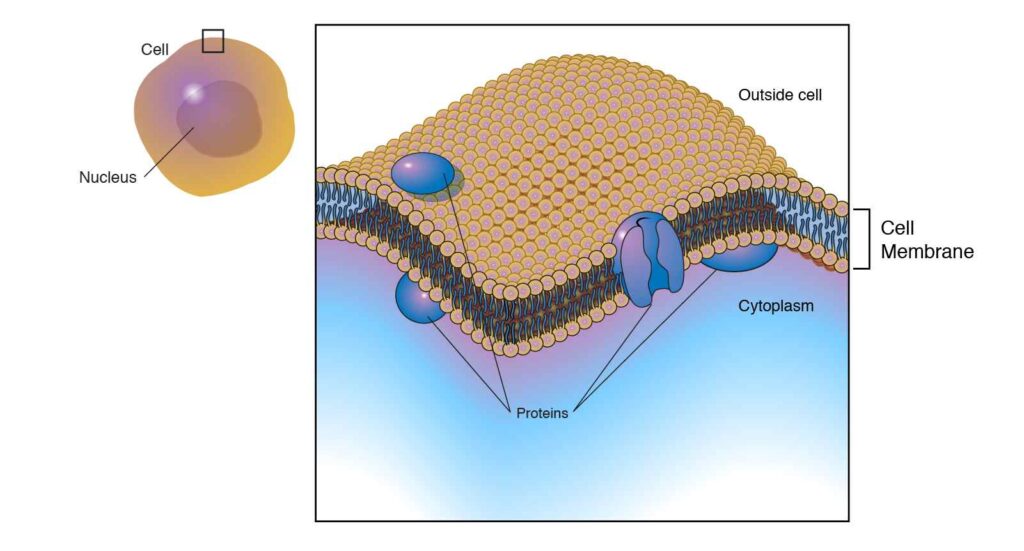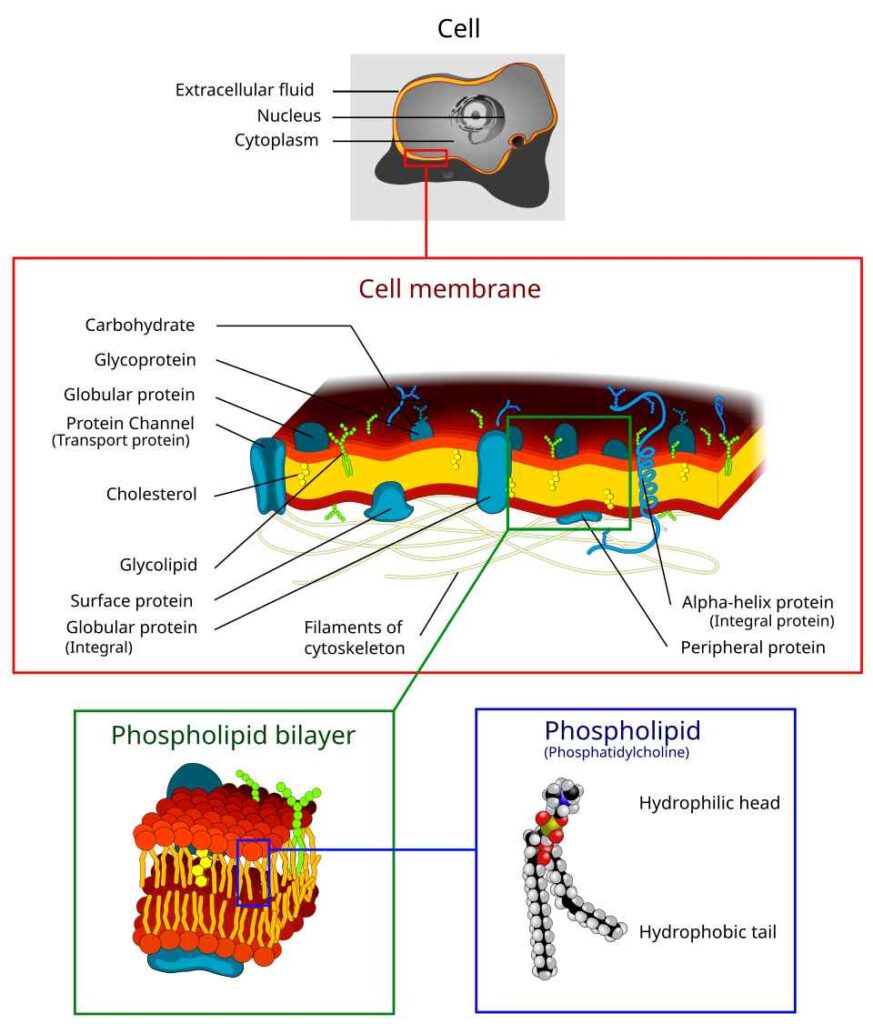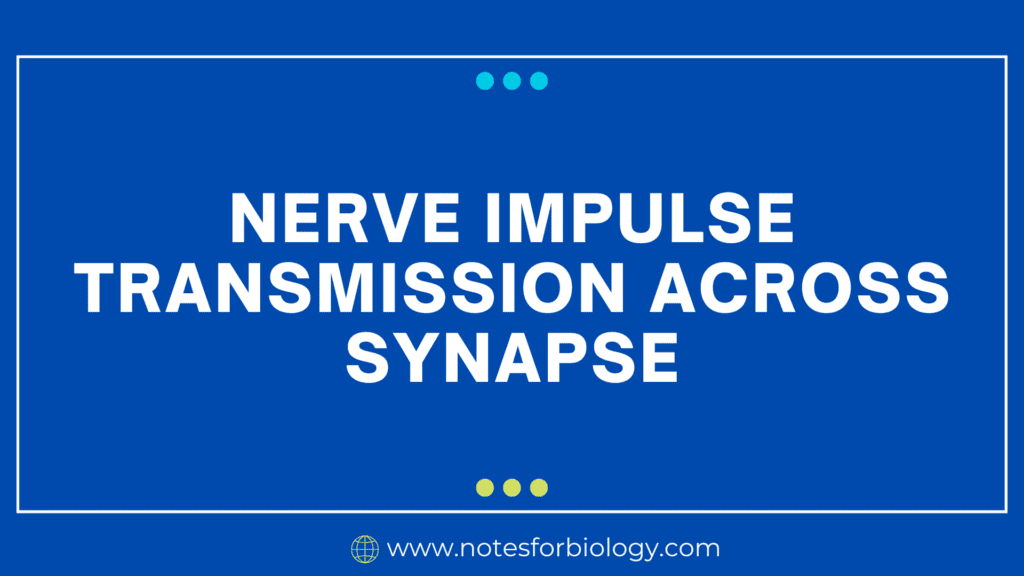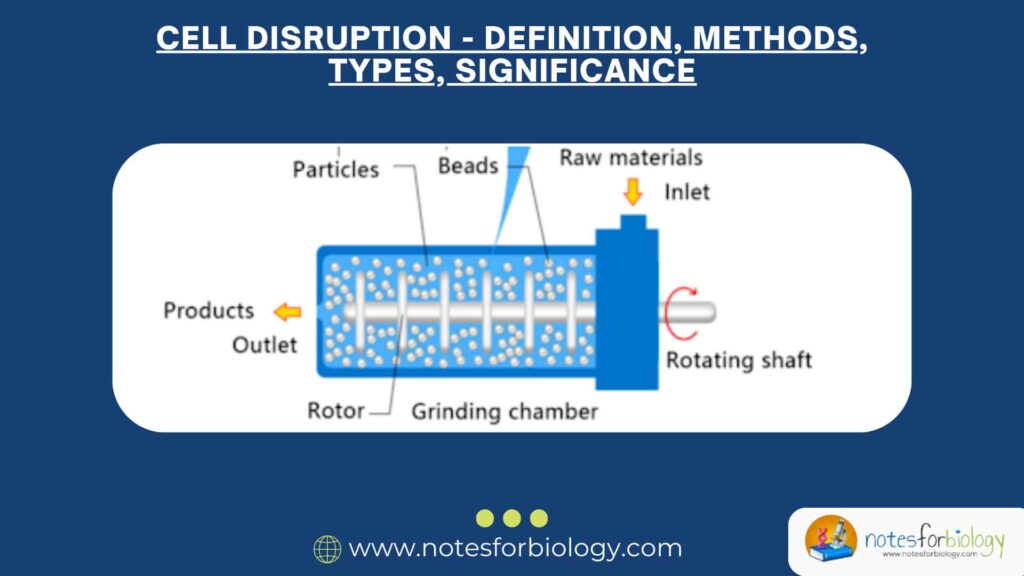Cell membrane

The cell membrane, also known as the plasma membrane, is a soft, flexible, and delicate outer boundary of all living cells. It acts like a skin for the cell, separating the internal contents (like cytoplasm and organelles) from the external environment. It is semi-permeable, which means it allows only certain substances to pass in and out of the cell. Think of it as a selective gateway that controls what comes in and what goes out.
Apart from acting as a protective shield, it plays a major role in cell communication, signal reception, nutrient exchange, and maintaining balance within the cell. This vital membrane is present in both prokaryotic and eukaryotic organisms. In animal cells, it forms the outermost layer, while in plant cells, it is located just inside the cell wall.
Summary of Cell membrane
- The cell membrane is the outer layer of the cell that controls what enters and leaves, protecting the cell and keeping it stable.
- It is made of phospholipids, proteins, cholesterol, and carbohydrates, which all work together to help the cell communicate, transport materials, and stay flexible.
- Its structure is explained by the Fluid Mosaic Model, meaning it’s made of many moving parts that form a flexible and functional barrier around the cell.
Table of Contents
Composition of the Cell Membrane
The cell membrane is a complex structure made of various molecules that work together to perform different roles. Its primary components are:
1. Phospholipids
Phospholipids are the basic building blocks of the membrane. Each phospholipid molecule has two parts:
- A hydrophilic head (water-loving), which faces outward toward watery environments.
- Two hydrophobic tails (water-fearing), which face inward away from water.
These molecules arrange themselves into a double layer, called the phospholipid bilayer, with the heads facing outward and the tails tucked inside. This creates a stable, flexible barrier that protects the cell.
2. Proteins

Proteins are embedded within or attached to the phospholipid bilayer. They perform important functions such as:
- Transport proteins help in the movement of substances across the membrane.
- Receptor proteins receive chemical signals from outside the cell.
- Enzymes carry out chemical reactions at the membrane surface.
- Structural proteins support the membrane’s shape and strength.
There are two main types of membrane proteins:
- Integral proteins: These go through the membrane from one side to the other.
- Peripheral proteins: These are attached to only one side of the membrane.
3. Cholesterol
Cholesterol is found between the phospholipids in animal cells. It helps to:
- Stabilize the membrane structure.
- Prevent the membrane from becoming too stiff in cold temperatures.
- Stop it from becoming too fluid in warm temperatures.
Thus, cholesterol ensures the membrane maintains the right fluidity and flexibility.
4. Carbohydrates
Carbohydrates are found attached to lipids (glycolipids) or proteins (glycoproteins). These carbohydrate chains:
- Extend outside the cell membrane.
- Help cells recognize and communicate with one another.
- Play a key role in the immune system by identifying “self” from “foreign” cells.
Structure of the Cell Membrane (Fluid Mosaic Model)

The Fluid Mosaic Model is the most accepted model to describe the cell membrane’s structure. It shows how the different parts of the membrane fit together and move around like pieces in a mosaic.
1. Fluid Nature
The membrane is not rigid. The molecules within it move side-to-side like people floating in a pool. This fluidity allows the cell to:
- Change shape.
- Heal minor damage.
- Move materials around within the membrane.
2. Mosaic Arrangement
The membrane is made of various molecules like lipids, proteins, and carbohydrates. These components are scattered unevenly, like tiles in a mosaic, giving the membrane a diverse and functional layout.
3. Bilayer Formation
The double layer of phospholipids forms the foundation of the membrane. Proteins float within or attach to this bilayer, and cholesterol is inserted between phospholipids. Carbohydrates extend out from the surface, forming a coating that interacts with the environment.
Functions of the Cell Membrane
The cell membrane is vital for the survival of the cell. Its many roles include:
1. Acts as a Selective Barrier
- It controls the entry and exit of substances.
- Allows essential nutrients like glucose, oxygen, and amino acids in.
- Removes waste products and prevents harmful substances from entering.
- Maintains homeostasis, the internal balance of the cell.
2. Provides Protection and Structure
- It acts as the first line of defense.
- Maintains the shape and integrity of the cell.
- Especially important in animal cells that do not have a cell wall.
3. Facilitates Transport
There are two main types of transport across the membrane:
- Passive Transport: No energy required.
- Diffusion: Movement of particles from high to low concentration.
- Osmosis: Movement of water across the membrane.
- Facilitated diffusion: Uses carrier proteins to help move substances.
- Active Transport: Energy is needed.
- Moves materials against the concentration gradient (from low to high).
- Requires ATP energy.
4. Enables Cell Communication and Signal Reception
- Receptor proteins detect chemical signals like hormones.
- These signals trigger responses inside the cell.
- This is important for growth, immune response, and cell coordination.
5. Supports Cell Recognition and Interaction
- Carbohydrate chains help cells identify one another.
- Crucial for immune defense, tissue formation, and development.
- Helps cells bind or separate depending on their function.
6. Endocytosis and Exocytosis
- Endocytosis: Cell engulfs large particles by folding its membrane inward to form vesicles.
- Exocytosis: Vesicles inside the cell fuse with the membrane to release their contents outside.
- These processes help in nutrient uptake, waste disposal, and secretion of hormones or enzymes.
7. Anchoring the Cytoskeleton
- The membrane connects to the cytoskeleton, an internal framework of proteins.
- This connection helps in:
- Maintaining the shape.
- Moving the cell.
- Dividing during cell reproduction.
Conclusion
The cell membrane is not just a protective layer. It is a living, responsive, and active structure that plays many vital roles in keeping the cell alive and functioning properly. From selecting what enters and exits the cell, to receiving signals, to helping in communication and defense this thin boundary does it all.
Its structure is beautifully designed: a dynamic blend of lipids, proteins, cholesterol, and carbohydrates that adapt and move constantly. The Fluid Mosaic Model captures this lively nature well, showing how the components shift while staying organized.
In short, the cell membrane is the controller, communicator, and protector of the cell. Without it, life at the cellular level would not be possible.
Frequently Asked Questions (FAQs)
What is the function of cell membrane?
The cell membrane controls the movement of substances in and out of the cell, helping maintain internal balance (homeostasis). It also protects the cell, supports communication, and allows the cell to respond to signals from its environment.
What are the main components of the cell membrane?
The main components of the cell membrane are phospholipids, proteins, cholesterol, and carbohydrates.
What role do proteins play in the cell membrane?
Proteins help in transport, signal reception, enzyme activity, and structural support.
Related Articles




